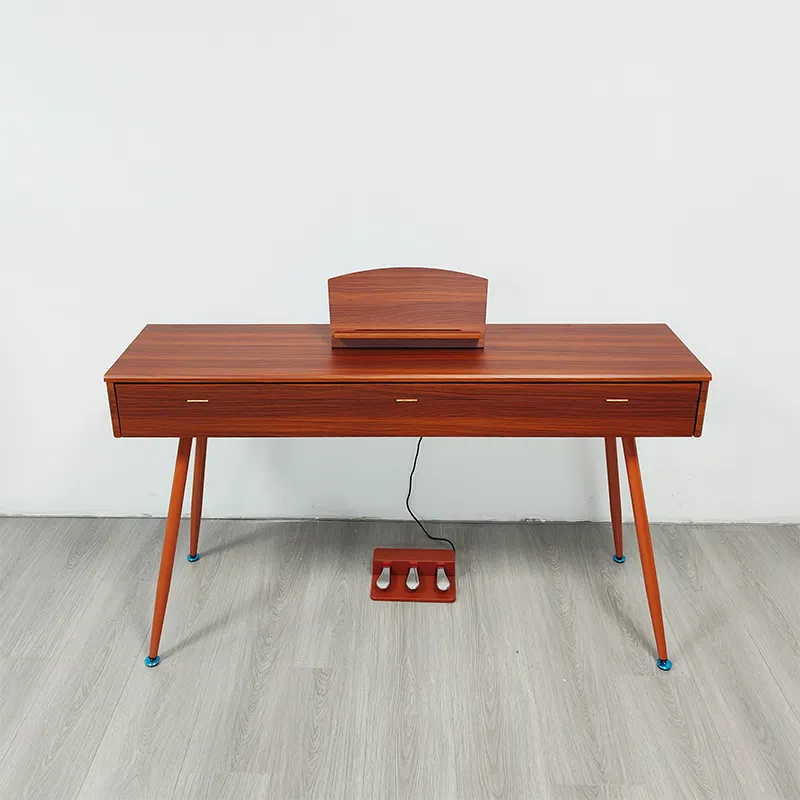As the landscape of modern music continues to evolve, musicians increasingly embrace technology to enhance creativity and performance. One of the most influential tools in this shift is the digital piano. More than a mere alternative to the traditional piano, the digital piano represents a versatile and dynamic instrument that meets the demands of contemporary professionals. With its growing capabilities, the digital piano is becoming a vital asset in both practice and performance settings.
Modern digital pianos are engineered using sophisticated sampling technology. These instruments reproduce the sounds of world-class grand pianos by recording each note at various dynamic levels. As a result, a digital piano can convey the intricate tonal qualities and dynamics necessary for expressive playing. The most advanced models also simulate sympathetic string resonance and damper noise, creating an authentic acoustic experience.
Digital pianos now boast high polyphony counts—often 192 notes or more—which prevents note drop-off during intricate or sustained passages. This capability supports expressive control and allows musicians to perform complex compositions with clarity. The result is a digital piano that mirrors the sonic depth and emotional nuance of its traditional counterpart.
Unlike acoustic pianos, digital pianos are compact and lightweight. This makes transportation significantly easier for gigging artists and session musicians. A professional can move a digital piano between home, studio, and venue without the need for professional movers. Portability ensures that musicians can maintain consistent sound and familiarity across different settings.
A digital piano does not require tuning or regular maintenance. Professionals who are constantly on the move or involved in intensive schedules benefit from its durability and reliability. Without the need for temperature or humidity regulation, a digital piano provides consistent performance under varying conditions.
MIDI capability is one of the standout features of a digital piano. This allows seamless interaction with digital audio workstations (DAWs) for composing, arranging, and producing music. Professionals can connect the digital piano to a computer and control software instruments, making it a powerful tool in studio environments.
Many digital pianos now support Bluetooth connectivity, enabling wireless integration with apps for learning, composing, and collaborating. Musicians can access interactive sheet music, control sound settings, and synchronize with recording tools. This enhances workflow efficiency and creativity.
One of the key attractions of a digital piano is its vast array of tones beyond just piano sounds. These include electric pianos, strings, harpsichords, organs, and more. This flexibility supports diverse genres and styles, enabling artists to experiment with unique soundscapes.
With adjustable touch sensitivity, reverb effects, EQ settings, and pedal response, the digital piano empowers musicians to tailor their instrument to their individual playing style. These features make it suitable for both performance and recording, ensuring that artists have total control over their sound.
One significant advantage of the digital piano is the ability to practice silently using headphones. This allows professionals to rehearse at any hour without disturbing others. Whether at home, in a hotel room, or in a shared studio, this functionality supports flexible practice schedules.
Many digital pianos include metronomes, rhythm accompaniments, and lesson functions. These tools are valuable even for seasoned players, offering structure and enhancing technique. Features like split mode and dual mode also support teaching and duet practice.
Though digital pianos replicate the feel of weighted keys, some pianists still notice differences in key resistance and mechanical action. While high-end digital models use graded hammer mechanisms to simulate traditional key movement, the nuanced touch of an acoustic grand may be preferred by some professionals.
A traditional piano produces sound through physical vibration, creating natural overtones and room-filling resonance. Digital pianos, while equipped with powerful speaker systems, cannot fully replicate this acoustic phenomenon. For concert hall settings, this distinction remains significant.
For studio work, a digital piano provides unmatched convenience. Its ability to interface with software, produce clean audio recordings, and maintain consistent tuning makes it ideal for music producers and composers. Features like MIDI recording and layer/split functions offer tremendous versatility.
Digital pianos are often the preferred choice for live performers due to their ease of transport and sound control. Amplification options and sound shaping capabilities make them suitable for diverse venues, from small gigs to large stages. Custom preset settings can also streamline on-stage transitions.
Professionals who focus on genres like jazz, pop, rock, and electronic music frequently choose digital pianos for their adaptability. With onboard effects and voice layering, musicians can craft distinct sonic identities. While classical players may prefer the tonal subtleties of acoustic instruments, many now recognize the practicality and high performance of digital pianos.

Yes. Many digital pianos are equipped with MIDI and audio outputs, allowing for direct connection to recording equipment or software.
No. Digital pianos maintain consistent pitch through electronic sound generation, eliminating the need for regular tuning.
Yes. High-quality digital pianos offer realistic key action and sound sampling, making them capable of supporting classical repertoire, though some purists may prefer acoustic instruments.
Yes. Most models include USB, MIDI, or Bluetooth options for seamless computer integration.
Digital pianos are more portable and offer customizable sounds and amplification, making them more practical for many live situations, especially outside of concert halls.